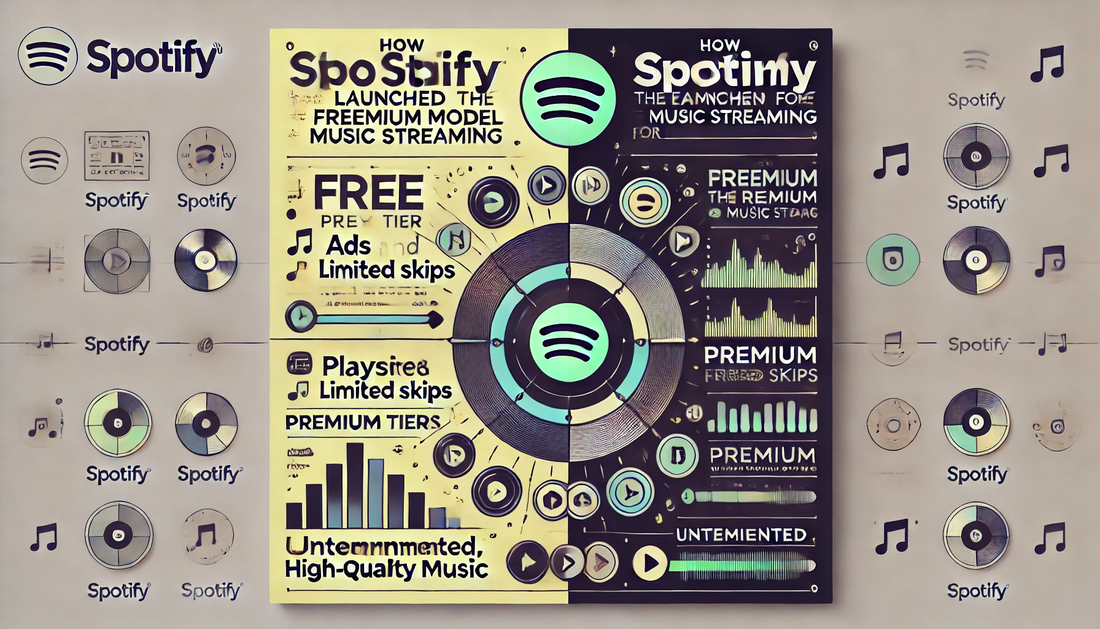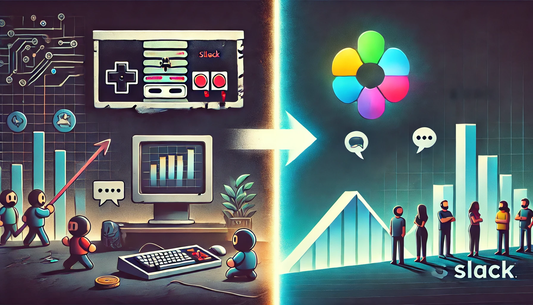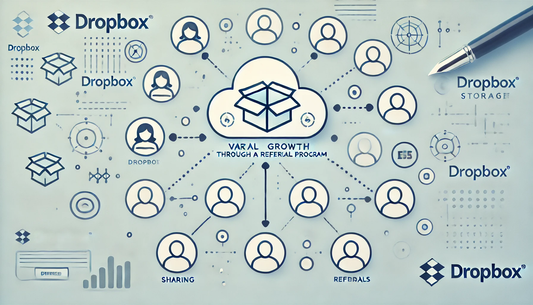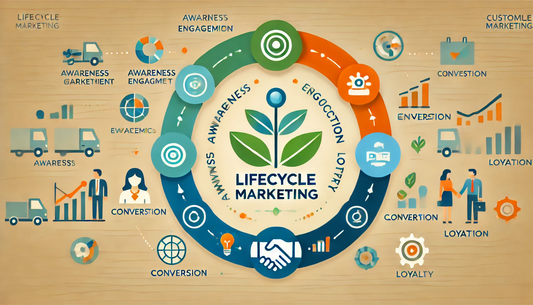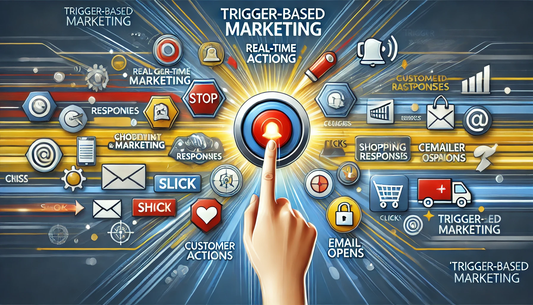When Spotify launched in 2008, it revolutionized the music industry by introducing a freemium model that allowed users to stream music for free while offering premium upgrades.
At a time when piracy dominated digital music, Spotify found a way to balance accessibility with artist compensation. Today, it’s the world’s leading music streaming platform, with over 500 million users.
For startup founders, Spotify’s success story offers valuable lessons in scaling a business, building a loyal user base, and disrupting established industries.
Here’s how Spotify launched the freemium model for music streaming and actionable takeaways for startups aiming to replicate its innovative approach.
The Problem: Piracy Dominated Digital Music
Before Spotify, the music industry was in turmoil. Illegal file-sharing platforms like Napster and LimeWire were rampant, and piracy was eroding revenue streams for artists and record labels.
Consumers wanted convenient, instant access to music, but existing legal platforms failed to meet these needs, leaving the door open for piracy.
Spotify’s founders, Daniel Ek and Martin Lorentzon, saw an opportunity to provide a legal, user-friendly alternative to piracy by offering a platform where users could stream music for free, supported by ads.
By creating a service that made accessing music convenient and affordable, Spotify offered a solution that benefitted both users and artists.
Actionable Takeaway #1: Solve a Problem by Offering Value to All Parties
Spotify’s success came from addressing a widespread problem—piracy—while offering value to both consumers and creators.
For startups, identifying a problem that affects multiple stakeholders and crafting a win-win solution can create a powerful foundation for growth.
The Freemium Model: Free Access with Premium Upsell
Spotify’s innovative freemium model was key to its rapid growth. The platform allowed users to access a vast library of music for free, supported by ads.
However, users could upgrade to Spotify Premium for an ad-free experience, offline listening, and higher-quality audio.
This model allowed Spotify to attract a massive user base quickly, removing barriers to entry while generating revenue through advertising and premium subscriptions.
The freemium approach also helped convert free users into paying customers over time by offering tangible benefits in the premium tier.
Actionable Takeaway #2: Use Freemium to Build a User Base and Upsell
The freemium model can be a powerful tool for startups, offering users a taste of your product for free while incentivizing them to upgrade to a premium version.
Startups can leverage freemium to attract users quickly, build trust, and generate recurring revenue through paid features.
Focus on User Experience: Personalization and Playlists
From the start, Spotify focused on delivering an exceptional user experience.
One of its key innovations was personalized playlists, such as “Discover Weekly” and “Release Radar,” which used algorithms to recommend music based on users’ listening habits.
This personalized approach kept users engaged and coming back for more.
Spotify’s seamless design, intuitive search functionality, and curated playlists made it easy for users to discover new music and enjoy their favorite tracks.
By prioritizing user experience, Spotify differentiated itself from competitors and built a loyal audience.
Actionable Takeaway #3: Prioritize User Experience and Personalization
User experience is critical to building long-term loyalty. Startups should focus on creating intuitive, user-friendly platforms that offer personalized experiences.
The more tailored and enjoyable the experience, the more likely users are to engage with and pay for your product.
Partnering with Record Labels and Artists
To succeed, Spotify had to secure buy-in from record labels and artists. At a time when the music industry was grappling with declining revenue, Spotify offered a new revenue stream through royalties from streaming.
While it wasn’t easy to convince the industry at first, Spotify eventually secured licensing deals with major labels like Universal, Sony, and Warner Music.
These partnerships allowed Spotify to offer a vast catalog of licensed music, making it an attractive alternative to piracy.
The platform also provided transparency through data analytics, giving artists insight into their streams and audience demographics, adding value to the music community.
Actionable Takeaway #4: Build Strategic Partnerships to Add Value
Partnerships can be crucial to scaling your startup, especially if you’re entering an industry with established players.
Focus on creating win-win partnerships that benefit both parties. By aligning your interests with key stakeholders, you can gain access to new markets and strengthen your product offering.
Scaling Globally: Expanding into New Markets
Spotify didn’t limit itself to one region. From the outset, the company had global ambitions, expanding into new markets rapidly.
By adapting its service to different countries, offering local language support, and working with local music rights holders, Spotify scaled quickly, reaching millions of users worldwide.
This global expansion helped Spotify build a vast and diverse user base, increasing its revenue potential and brand recognition. Today, Spotify is available in over 180 countries, with localized content and playlists tailored to each region.
Actionable Takeaway #5: Plan for Global Scalability
When building your startup, think globally from the start. Scaling internationally opens up new revenue streams and allows you to reach a broader audience.
Be prepared to adapt your product for different regions, languages, and cultures to maximize your growth potential.
Monetizing Through Ads and Subscriptions
Spotify’s revenue model was built on a combination of advertising and premium subscriptions. Free users generated revenue through ads, while premium subscribers provided recurring revenue streams.
This dual revenue model ensured that Spotify could generate income from all users, regardless of whether they opted for the free or paid version.
The company also introduced innovative ad formats, such as sponsored playlists and branded takeovers, allowing advertisers to reach targeted audiences.
This approach helped Spotify maximize ad revenue without disrupting the user experience.
Actionable Takeaway #6: Diversify Your Revenue Streams
Having multiple revenue streams can make your startup more resilient and scalable. Consider offering free services supported by ads, alongside premium versions for paying customers.
This approach allows you to generate revenue from a wider user base while providing additional value to those willing to pay for an enhanced experience.
Data-Driven Insights: Using Analytics to Refine the Product
Spotify leveraged data and analytics to continuously refine its platform. By analyzing user behavior, listening habits, and preferences, Spotify was able to optimize its playlists, improve song recommendations, and enhance user engagement.
This data-driven approach also benefitted artists, providing them with insights into their audience demographics, geographical reach, and popular tracks. Spotify’s ability to gather and utilize data made it a more attractive platform for both users and creators.
Actionable Takeaway #7: Use Data to Improve and Personalize Your Product
Data is a powerful tool for optimizing your product and creating personalized experiences. Continuously gather user data to understand how people are interacting with your platform and refine your features based on these insights.
This helps you keep your product relevant and engaging.
Adapting to Changing Trends: Embracing Podcasts
As the podcast industry grew, Spotify saw an opportunity to diversify its content and revenue streams.
The company invested heavily in podcasts, acquiring popular platforms like Anchor and Gimlet Media, and signing exclusive deals with high-profile creators such as Joe Rogan.
This move expanded Spotify’s offerings beyond music, making it a one-stop platform for audio content. By embracing new trends and continuously evolving, Spotify stayed ahead of the competition and maintained its position as a leader in the audio streaming space.
Actionable Takeaway #8: Stay Agile and Adapt to Market Trends
Successful startups are those that can adapt to changing market trends and consumer preferences. Don’t be afraid to evolve your product offering or pivot when necessary.
By staying flexible, you can capture new opportunities and keep your product relevant as the market shifts.
Key Lessons for Startups
Spotify’s journey from a small startup to a global music streaming leader offers essential lessons for founders:
- Solve a major problem by offering value to multiple stakeholders.
- Use the freemium model to build a user base and drive conversions.
- Focus on user experience and personalization to drive engagement.
- Build strategic partnerships to strengthen your offering and scale faster.
- Plan for global scalability from the outset.
- Diversify revenue streams with a combination of ads and subscriptions.
- Leverage data to optimize your product and create personalized experiences.
- Stay agile and adapt to changing market trends to stay ahead of the competition.
By following these strategies, startup founders can replicate Spotify’s success and create platforms that attract millions of users while disrupting established industries.

